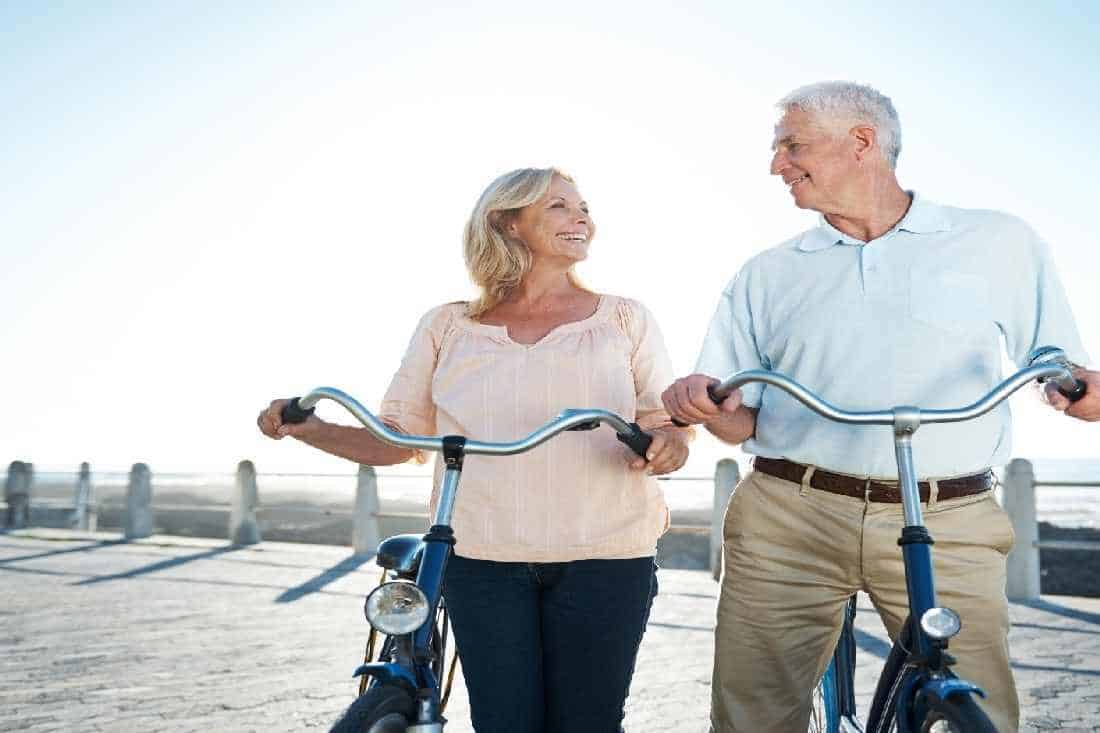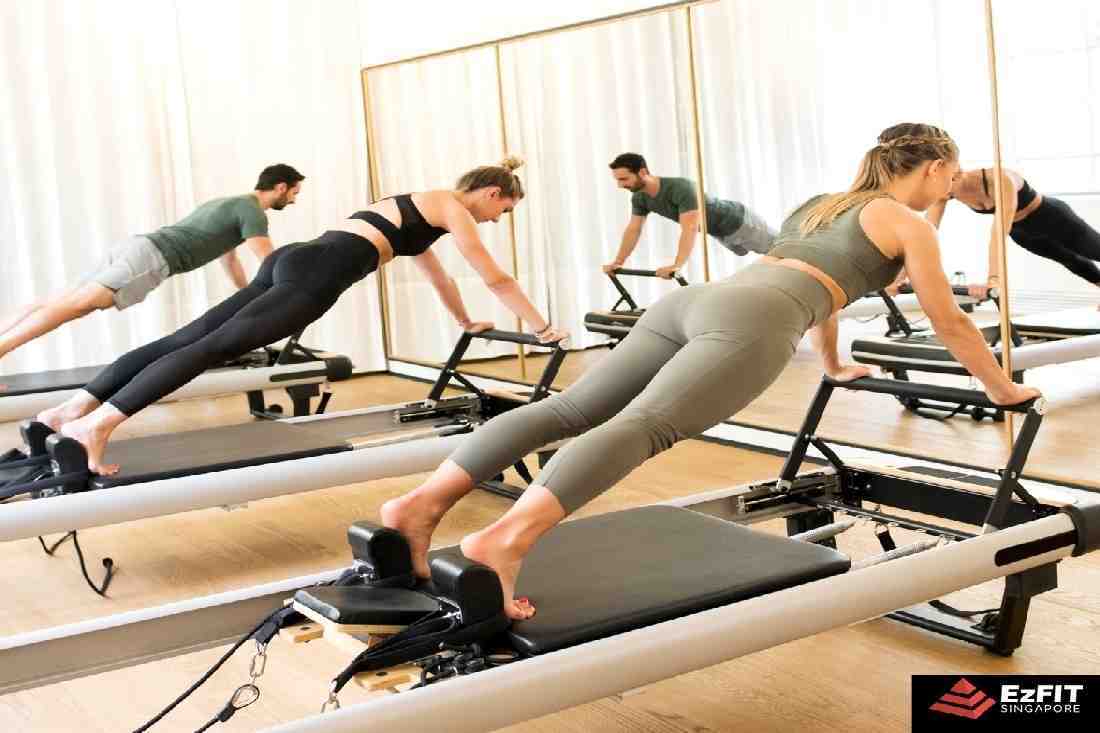It’s not that hard to adapt to fitness. You can get up and move anytime, anywhere to be more physically active and stay healthy. Every minute counts towards the goal of at least 150 minutes of exercise per week. Every time you get up and do something, you take a step in the right direction.
Move at Home, Outdoors, and Almost Anywhere
Prolonged sitting has been shown to have a variety of negative health effects, from obesity and high blood pressure to abnormal cholesterol levels and even the risk of heart disease and cancer. A 2017 study found that there was a direct link between a sedentary lifestyle and the risk of premature death. Interestingly, a 2015 study found that prolonged sedentary time had negative health effects regardless of physical activity; Basically, a hour visit to the gym won’t undo the damage done by sitting at a desk for 8 hours.
The solution: Find ways to get more exercise throughout the day. You’ll avoid illness, feel better overall, and shed pounds (if that’s what you want). After all, standing or sitting for six hours for a 140-pound person burns an extra 54 calories a day, and it adds up!
Advantages of the Movement
- MUSCLES: You have over 600 muscles in your body, accounting for about 40% of your total body weight. Exercise strengthens your muscles, which improves stability, balance, and coordination. Don’t forget that stretching also helps keep your muscles healthy.
- BONES: Exercise helps build stronger, denser bones. Activities that strengthen bones, such as resistance training (weights), weight training (jogging, walking, walking), and balance training (yoga), can help improve bone density.
- JOINTS: Yoga is all about body awareness, forcing you to pay attention to every movement. By being aware of how you move, you can improve coordination and balance, be aware of the position of your joints, and relax. In addition, yoga promotes flexibility and range of motion, which increases flexibility and joint function.
- BRAIN: Walking 30 to 40 minutes three times a week may help “regenerate” brain structures associated with cognitive decline in older adults. If you work from home or tend to sit down more often, try to walk.
- HEART: According to the British Heart Foundation we can prevent around 10,000 deaths a year by staying fit, so exercise and try cycling to improve your heart health. Regular cycling can reduce your risk of heart disease by 50%.
- LUNGS: A fast pace improves cardiorespiratory resistance. Circuit training with a personal trainer or in a group fitness class is a perfect solution but again, you don’t have to do any high-intensity exercise. Try BODYFLOW or Yoga Sculpt instead – it still activates your lungs, but at a more comfortable pace.
Benefits of Body Exercise in Cardiovascular Health
Best Heart Cams
When you exercise and exercise, your heart’s chambers become stronger, larger, and more elastic, which increases the volume of blood pumped with each heartbeat. This will, among other things, bring more oxygen to the muscles.
More Red Blood Cells
Red blood cells carry oxygen to all our cells, and one of the benefits of moving your body is that it increases red blood cell production, allowing you to carry more oxygen to your muscles and other cells.
More Plasma in The Blood
As the number of red blood cells increases with movement and movement, the amount of plasma in the blood also increases, ensuring that the blood can still pump smoothly with all the new red blood cells.
More Blood Vessels in The Muscles
By moving the muscles, you stimulate the blood vessels to expand further in the muscles, helping to oxygenate them and increasing their resistance. This applies to all muscles, including the heart, which also gets stronger with exercise.
More “Good” Cholesterol
Good Cholesterol (HDL) removes “bad” cholesterol from the walls of blood vessels, leading to less “bad” cholesterol. Exercise helps remove “bad” cholesterol (LDL) from the blood and the walls of blood vessels to the liver. The liver then uses the LDL or excretes it from the body. The more you exercise, the less “bad” cholesterol will clog your arteries.
Strong Heart
With better heart chambers and more arteries bringing more oxygen-carrying red blood cells to your heart, it gets stronger overall the more you move.
Low Blood Pressure at Rest
With a strong heart and many arteries and many oxygen-carrying red blood cells, the body’s resting heart rate decreases, a clear indicator of good cardiovascular health.
Benefits of Moving Your Body to Muscle
Increased Number of Mitochondria
The mitochondria are the engine of the cell. They use oxygen and glucose to create the energy we use to move the muscle. More exercise causes muscle cells to produce more and better mitochondria, which use more oxygen and glucose to produce even more energy.
Growth Of Muscle Fibres
As you use your muscles, they start making more muscle fibres, they basically grow your muscles and help you move more and better.
Release Of Growth Hormone
Growth Hormone is released when you move more and affects several functions in your body including how you use your energy and help your muscles repair themselves after a workout organ injury to repair.
Benefits to Your Weight With Exercise
Greater Storage Capacity for Carbohydrates
The human body is designed to store glucose as glycogen in the muscles so that it is available when we need to move quickly before the blood can supply more glucose. Through exercise and sports, the body can store carbohydrates better and remove excess sugar from the blood.
Reduced Belly Fat
Excess fat, especially around the stomach, increases the risk of death for a variety of reasons. More exercise reduces the size of fat cells, especially in the abdomen. This is important because reducing the size of fat cells reduces the risk of diabetes.
Improved Fat Burning Ability
As we move more, we increase our ability to use fat for fuel. This is due to several factors, but the main reason lies in the higher quality of mitochondria discussed above.
Weight Control
Increasing the body’s ability to store carbohydrates, reducing fat cells, and the body’s ability to burn fat aid in weight management. In addition, when you exercise, you burn calories, which also helps you control your weight. This is especially true when the exercise isn’t intense enough to cause additional hunger, such as when exercising. B. Walking or moving around the house.
Other Physical Benefits of Body Movement
Lower Inflammation
Increased adipose tissue leads to several health risks, including diabetes, but is also known to contribute to systemic inflammation that can lead to heart disease, arthritis, depression, Alzheimer’s disease, and even cancer. Since exercise and exercise reduce fat cells, the risk of chronic inflammation goes down. In addition, exercise reduces systemic inflammation through other neural and hormonal pathways.
Increased Sex Hormones
Physical activity can help increase testosterone and estrogenic production, which is particularly important as it can help slow down the natural effects of aging such as decreased muscle mass and strength and alleviate the symptoms of menopause in women.
Stronger Bones
Most movements increase the strength of your bones to some extent, including walking, with the notable exceptions being exercise in water, which puts less pressure on the body, and cycling.
Better Joints
If we don’t overdo it and injure our joints, exercise is very important to keep us mobile. The increased blood flow and oxygen in the blood that comes from more exercise supplies the cartilage in our joints with more nutrients, keeping them healthy. Joint health is also improved by strengthening the muscles that help protect them.
Stimulates The Immune System
Exercise and exercise are great for the immune system to a point. If you have a tough workout, especially without the rest you need in between sessions, it can suppress your immune system and make you more susceptible to illness.
However, if you exercise moderately and rest when needed, exercise will increase immune cell circulation, better preparing you for and detecting future infections.
Not Moving the Body Is Risky
In turn, physical inactivity has been clearly shown to be a risk factor for cardiovascular disease, high blood pressure, type 2 diabetes, and even certain types of cancer. Inactivity can also increase feelings of anxiety and depression. It can even lead to premature death. On the other hand, here are some of the many benefits of getting more exercise throughout the day:
- Control Your Weight.
- Improve Your Mental Health and Mood.
- Fight The Disease.
- Increase Your Chances of Living Longer.
- Improve Your Sleep.
- Have More Energy.
- Relieve Stress.
- Improved Brain Function.
The human body is not designed to sit hunched over in a chair all day, day after day, it is designed to move. Fortunately, any movement can be considered physical activity and is beneficial, even small amounts of movement.
Ways to Move Your Body
1) Begin Exercise Every Hour
Keep moving by starting with something active every hour. At the beginning of each hour, do 25 jumping jacks.
Set alerts on your phone or smartwatch when needed to stay accountable.
2) Wake Up and Stretch
Start your day right: Get out of bed and do some side bends, arm circles, and toe touches. Do these five morning stretches to set the tone for your day.
You still don’t want to get up? Just sit on the bed and do yoga poses for toned hips.
3) Walk The Commute
Now, when you work from home instead of commuting, use that time before and after work to go for a long walk or run nearby errands.
4) Call Actively
Instead of sitting and talking on the phone, walk around the house, squat with your body weight, or stretch out your legs.
Keep your hands free and use headphones or wireless headphones on your call so you can do a few sets of dumbbell curls or challenge yourself to stand for the duration of your call.
5) Have A Glass of Water
Put a glass of water on your desk and get up to refill it every time you run out of water. Bonus: The more water you drink, the more often you need to go to the bathroom!
6) Postpone Your Meetings
If one of your colleagues is on-site, hold your meeting outdoors and do a few laps in your office building.
7) Take A Walk During Your Lunch Break
Make a habit of walking around the block before or (and!) after lunch.
8) Get Moving Before and After Meetings
If you can’t make it through a walking meeting, do a set of 10 push-ups (or one of these push-up alternatives) before logging into a Zoom meeting and another set after you’ve logged out.
9) Do Some Stretches at The Desk
Feeling stiff after spending the day hunched over your laptop? Try some simple stretches designed to combat long hours of sitting.
10) Move Around During Commercial Breaks
With all the streaming services available, it’s easier than ever to bypass traditional commercial breaks and watch an entire episode (or season) without moving. Break up your binge session with a break of your own every 20 minutes or so.
Get up and march in place, walk up and down the stairs, or dance across the room with your children for five minutes. Or make it a family challenge: See who can do the most push-ups, sit-ups, or jumping jacks during each commercial break.
Finally
Improve your life by becoming more active. This not only includes exercising or playing sports, but also getting more exercise into the day. Live your best life by moving more. When there is more movement, you can really make your life healthy and happy.




